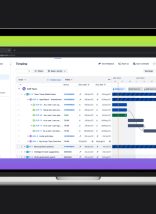A few years ago, we were able to see which way the wind was blowing. Mobile use was on the rise. In response, we started advising our web design clients to take notice. Mobile/web compatibility needed to be a priority. It wasn’t a tough recommendation to understand. Website visits from phones and tablets have surpassed visits from desktops since 2014.
But, having a mobile-friendly website isn’t enough. Now is the time to start thinking about a mobile-first strategy for your online marketing.
Why should you use this marketing philosophy? And how? Let’s look at what you need to know.
Why Mobile-First Makes Sense
Mobile devices are now the primary means of connection to the internet for most of us. The majority of us, including your customers, prefer to use an iPad or Galaxy. Even if we have a laptop ready at hand, we often don’t choose it.
The numbers bear this out. Smartphones are flying off the shelves. Studies show that 57% of all searches originate from a smart device. It’s likely we’ll reach a point where mobile queries make up two-thirds of Google’s search traffic in a few years.
This leads to an interesting conclusion: mobile visits to your website are the norm. It isn’t that some of your customers are coming to you on a small screen, it’s that most of them are. Why not prioritize that traffic if it makes up the majority?
When Campbell University partnered with Atlantic BT for a website overhaul, modernization was a priority. Mobile traffic to Campbell.edu was skyrocketing, with an increase of 1277% since 2011. You read that right. 1277%. ABT designed Campbell’s new site to accommodate this influx. The result was a significant upgrade for the Campbell site and brand.
What Does Mobile-First Web Development Look Like?
Embracing a mobile-first mindset doesn’t mean turning your internet strategy upside down. It simply means you assume a potential customer will be visiting your pages from a phone or tablet. As a result, you should structure your content appropriately.
Here are a few details that make your website more usable to mobile visitors:
- You can improve your web hosting so your pages load quickly
- Optimize items with smaller images and content blocks for speed
- Design a responsive website layout that will adapt itself to the size of the display screen it’s on.
- Use radio buttons and drop-down menus instead of long forms and text boxes
- Deploy calls to action that are easy to engage with from a screen that a user will tap
- Make your navigation as simple and intuitive as possible. Then a user doesn’t have to dig through a lot of content to find what they’re looking for.
These tips are not all you can do, of course, but they can help you get started. A good business web development partner can help institute the upgrades you need. Best of all, going mobile-first won’t affect your ability to attract desktop buyers.
Mobile-first web design is all about getting more from your online presence. Now might be the perfect time to put it to work for your company.
Need help from a web development team that can handle both small and large projects? Contact the creative team at Atlantic BT to schedule a free consultation today!






